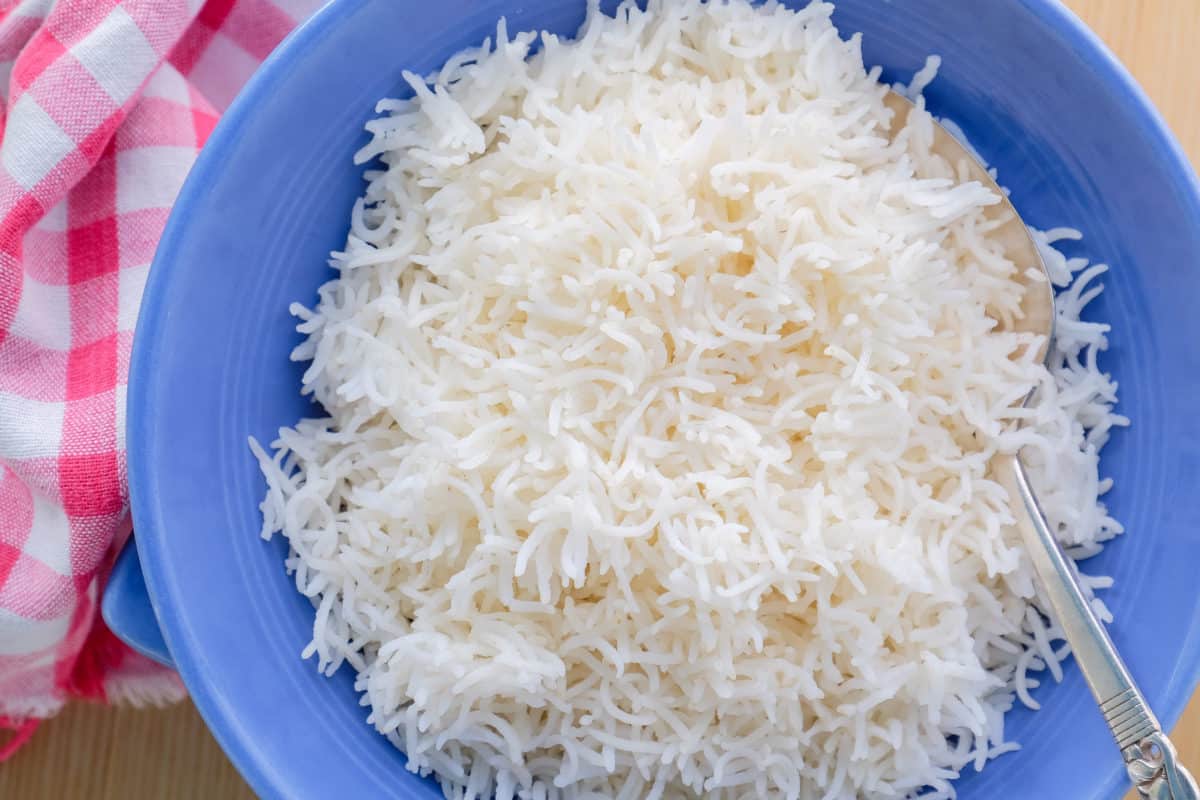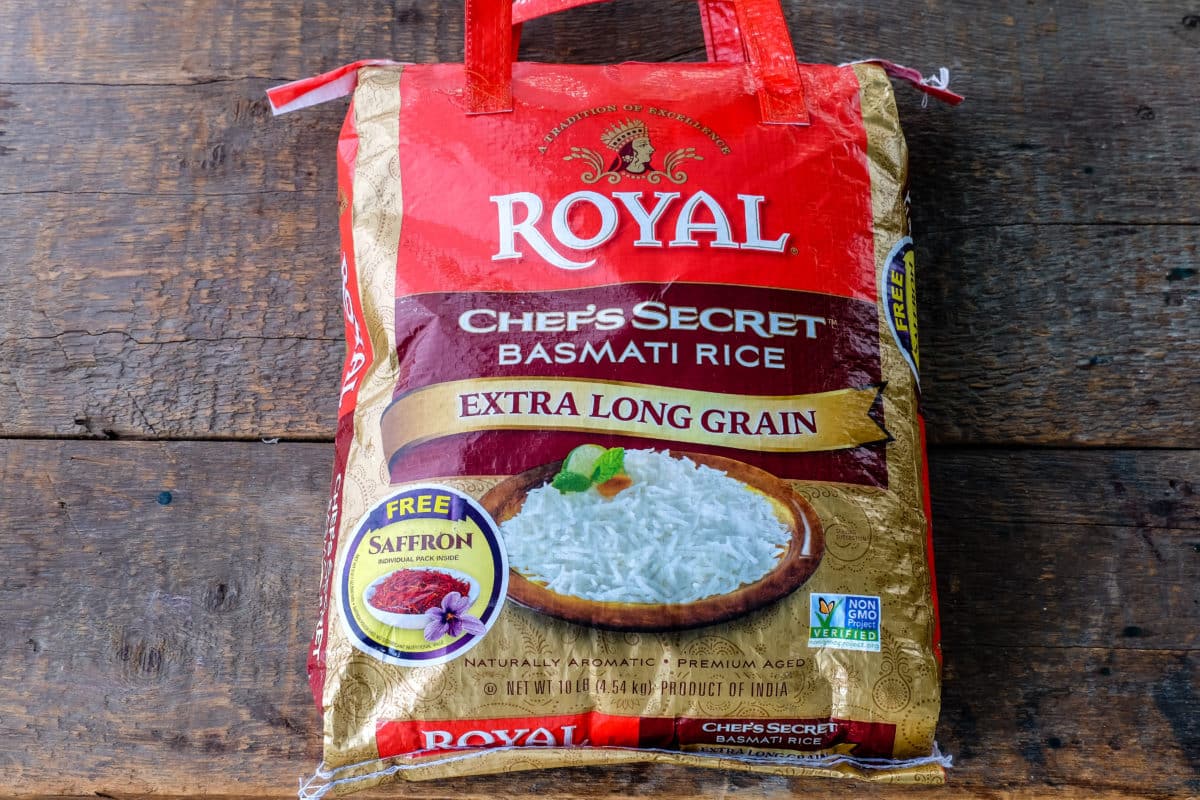“Man can wait for rice, but rice should not have to wait for man.”
-Indian proverb
In Kashmir, India, this dictum meant that when called to dinner, we children were ready and seated, in the receiving mode, cross legged on the carpet, well before the dasterkhan or bolt of long cloth was spread out in front of us at mealtime. Then the cook — or my grandmother, or my mother — would come along with a bowl of just-cooked, piping-hot rice and place a small pile of it in the middle of each plate. The vegetables and meat or fish or chicken were next, served in little portions around the steaming rice in the middle. Later, when help became difficult to find and we evolved to sitting at a dining table and helping ourselves from all the dishes placed on it, we still followed the same custom and do so today. I am still taken aback when my guests here in the United States, looking at my Indian meal ask, “So, tell me, what should I take first?”
Rice is first in the spiritual and temporal conscience of India. It is the main course and the heart of most meals unless you are eating breads as they do in the Punjab and other parts of North India. The other dishes are more in the nature of condiments and accoutrements to rice. This is one of the many things I had to become accustomed to when I came to America as a newly married woman forty years ago. Our supermarket near Princeton had the following printed on its brown bags: “The meat makes the meal.” Not so where I came from. One lamb chop would make many meals and we prayed that we always had rice.
In fact, at that time in America, and to some extent even now, rice was not the carbohydrate of choice. If you wanted rice, parboiled or Uncle Ben’s reigned supreme. Things have changed dramatically since then. The variety of rice available in even the most mainstream supermarkets is quite astounding. There is of course good old Ben’s, but also good old Carolina rice — and now the two are surrounded by jasmine rice from Thailand, basmati from India, and their cousins, Texmati, Jasmati, and so on. Incidentally, basmati means “queen of fragrance,” which it is. No perfume compares to the soul-satisfying fragrance and presence of cooked basmati rice. The very aroma of basmati being prepared will stimulate a flagging appetite.
"No perfume compares to the soul-satisfying fragrance and presence of cooked basmati rice."
When I was a child, the only respectable basmati was from Dehradun; it was more expensive than the many other varieties of rice grown. My maternal grandparents had rice fields where they grew mushk-i-budhij or bouquet garni, called thusly for the aromas the grain carried in its heart, and zag batha, or red rice, to be eaten only with fish cooked with daikon radish. But it was basmati that rose above the others for its sophistication and appearance; the grains were almost an inch long and very delicate. According to custom at that time, it was served mainly to sons-in-law (who are at the highest level in Indian family hierarchies), or to recuperating family members because it was easy to digest.
The other day I was trying to read the script on a ten-pound sack of basmati from India that I’d purchased from my local Asian grocery. The legend was in Urdu, albeit an archaic form more akin to Persian, that was not too easy to decipher. The word that stumped me was “brinj” the word in Kashmiri for small carpentry nails: what could it mean? I could not make head or tail of it until a friend in India informed me that rice is also called brinj in Persian/Urdu. I suspect from the length of the old basmati grain that the “nail” was named after that variety.

Basmati is no longer just from Dehradun in the northern hills below Mussoorie. Now it is grown in other places in India and has become a huge business; Pakistan has become a big exporter as well. As might be expected, quantity has taken precedence over taste, so the quality varies, as does the price. Hybridized incarnations have proliferated, but while they are good enough, they lack the soul and the length and slenderness of the old grain. Admittedly, they achieve their popular goal of spilling out perfectly like seed pearls on a plate as a biryani or a pillao, and this is particularly true of basmati exported to the USA. Now America has produced its own varieties of this fragrant rice, too.
I came to reflect on basmati recently when a dear friend, a foodie of the highest order, expressed his frustration with cooking American basmati. He complained that the grains cook too fast and turn to mush, even when cooked with very little water. I knew what he was talking about. The problem, I said to him, is that the rice is hastily harvested and too quickly sold. American basmati, Texmati, and the other Stateside “matis” soften easily because they are young. I gave up on them when I discovered the shortness of the grains and their tendency to overcook.
Aging rice is an un-American thing — it brings very little glory here, in the land of fast food. But the incontrovertible truth is that no aging means not-so-good rice. Aging thoroughly dries the grains, making it possible to store them in a hot or humid environment, and that is a must for storage of a staple through the Indian seasons. Hence the need for more water when you cook rice from India, which also needs time to cook perfectly and fluff slowly into individual grains. You just bring rice and water to a boil, lower the heat, and cook slowly until done.
No hurry here. Man must wait for rice. In India we say “Deyr aya durusth aya.” If it is late, it will be good. ![]()
